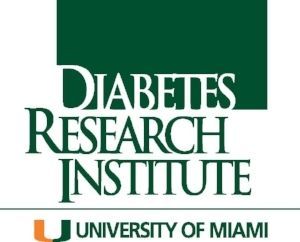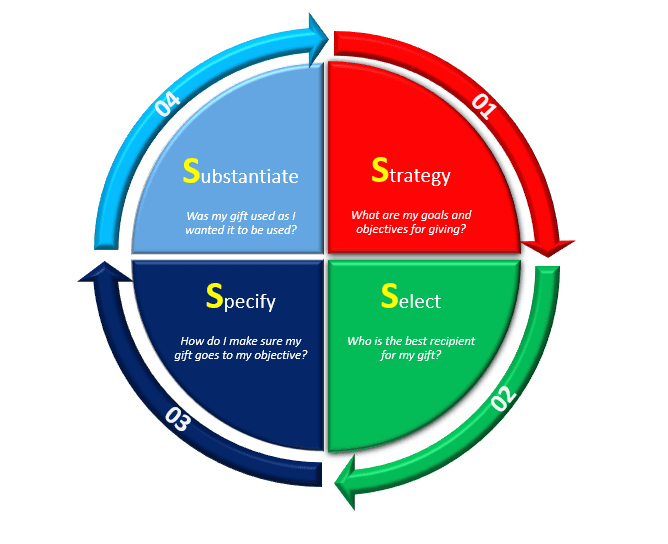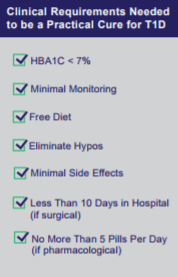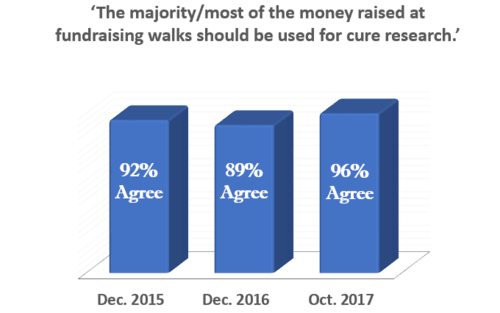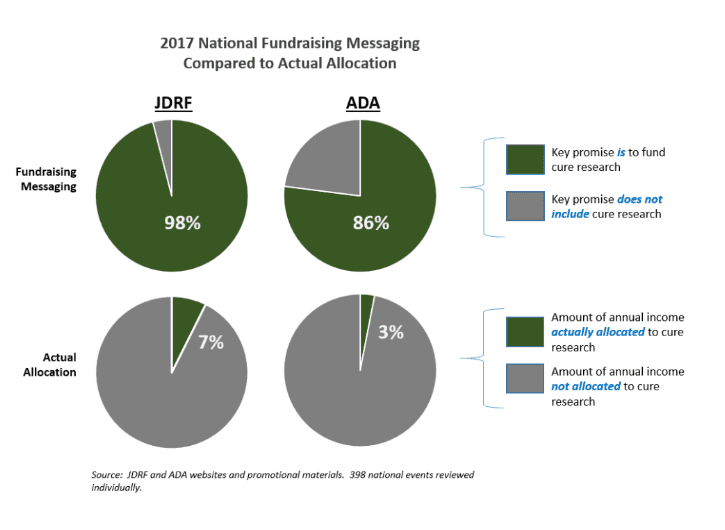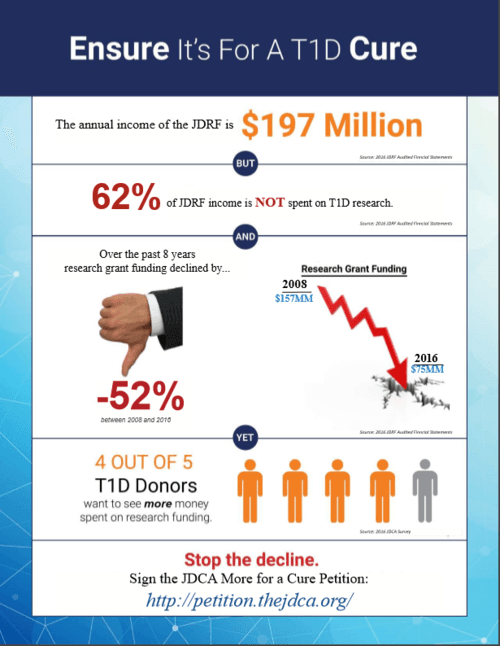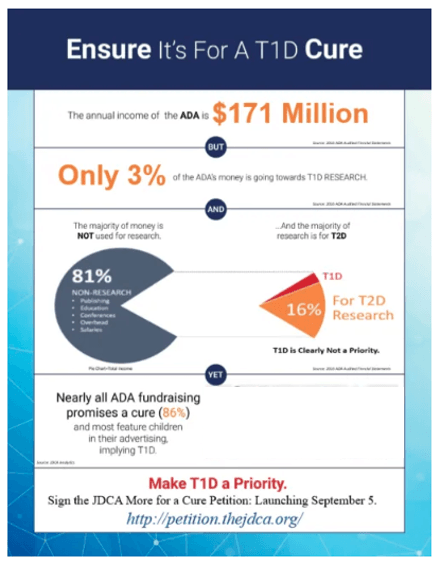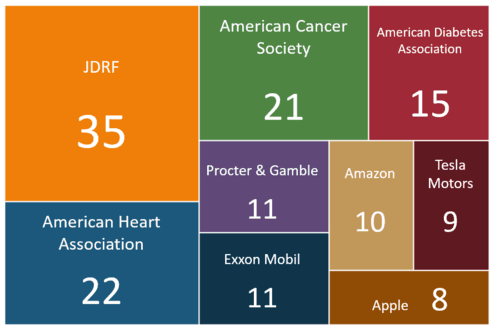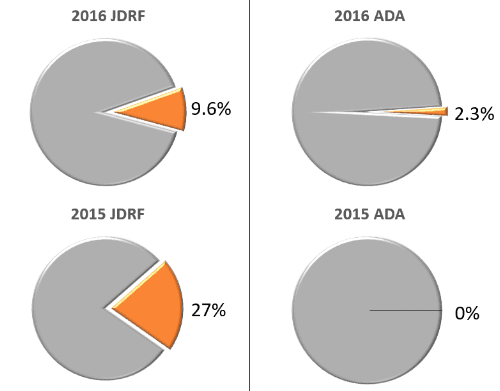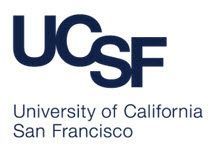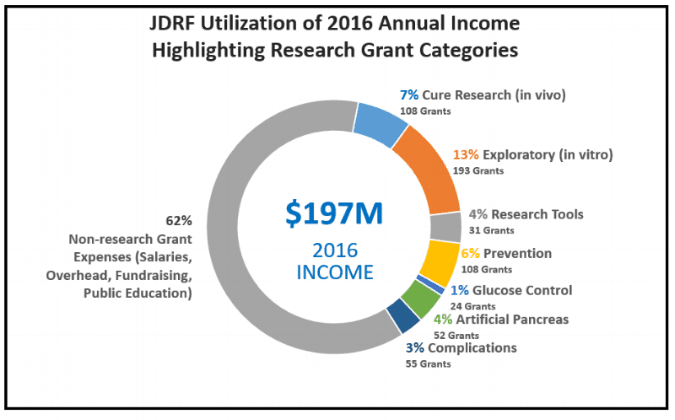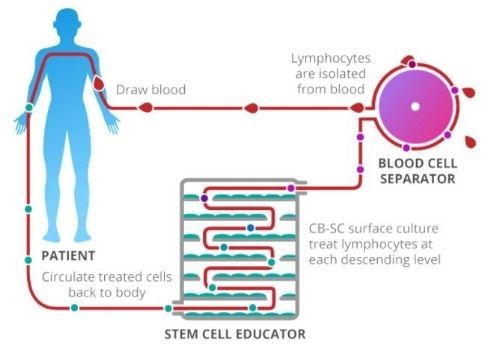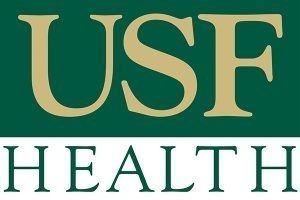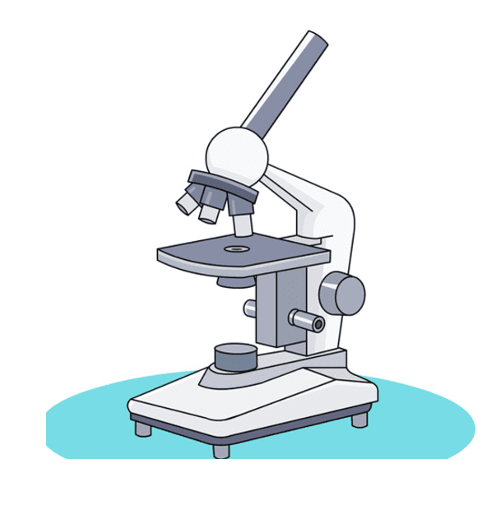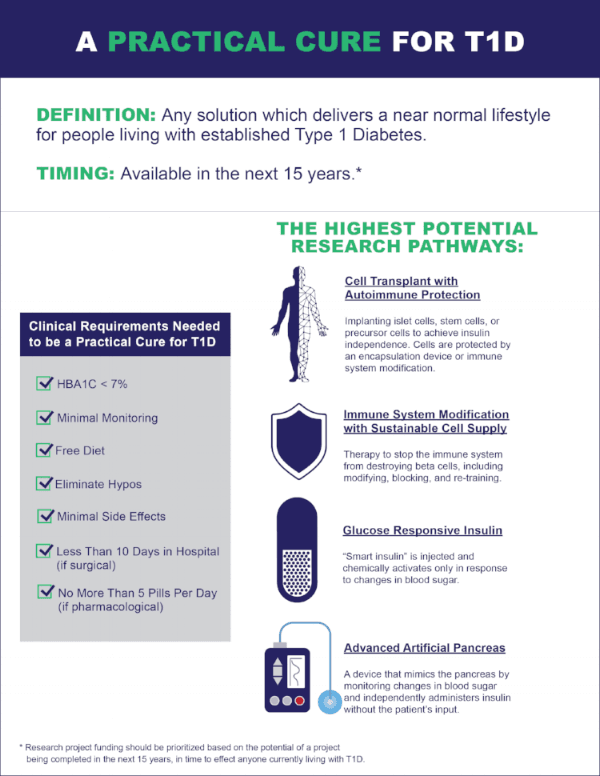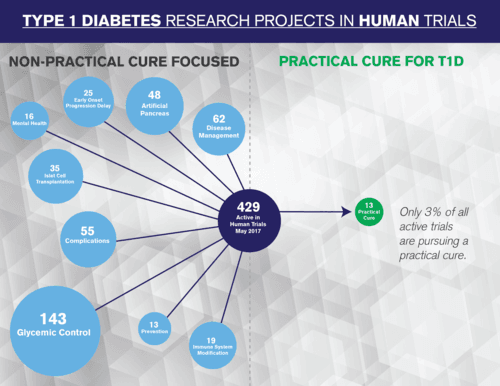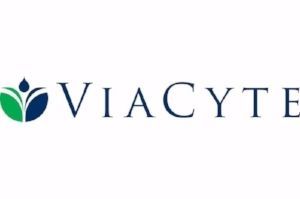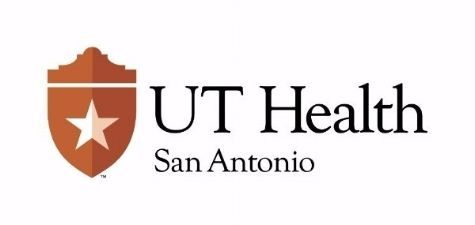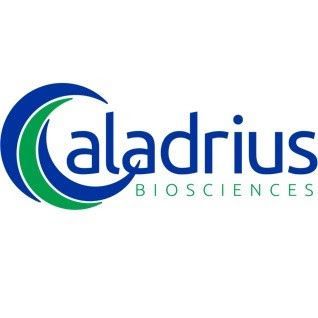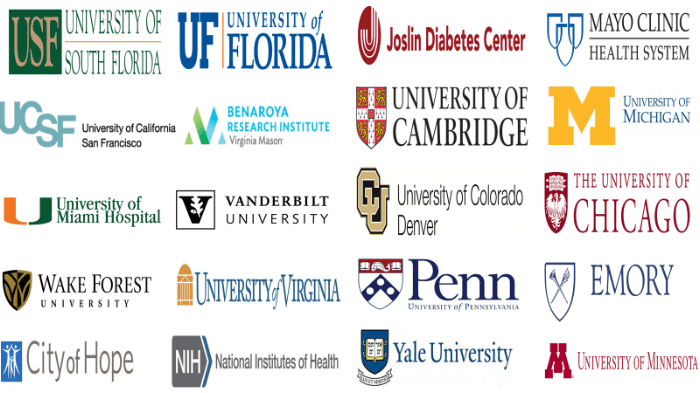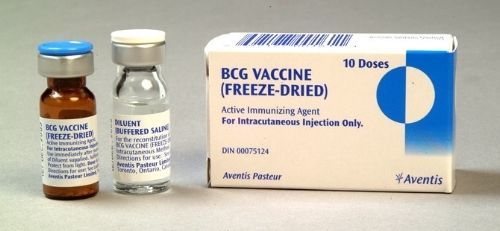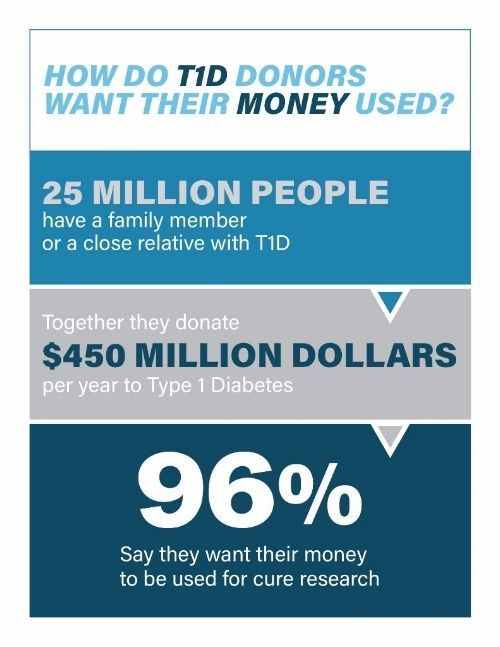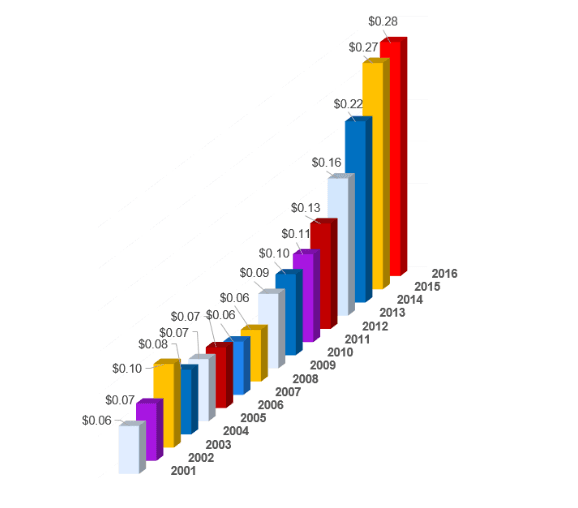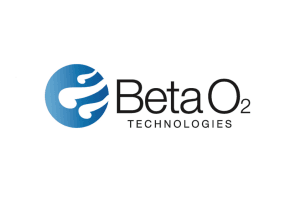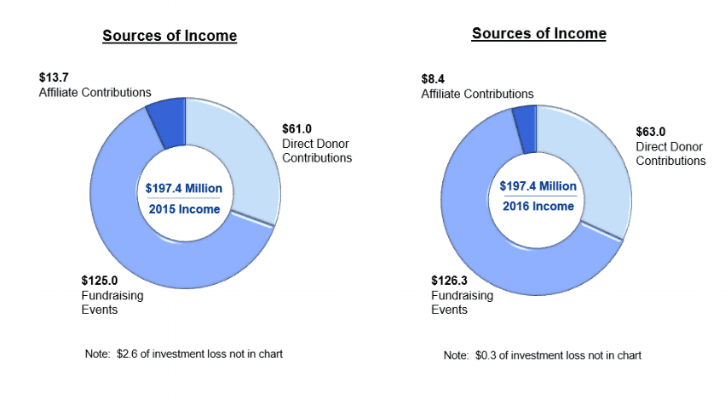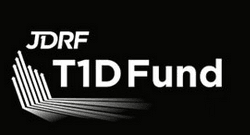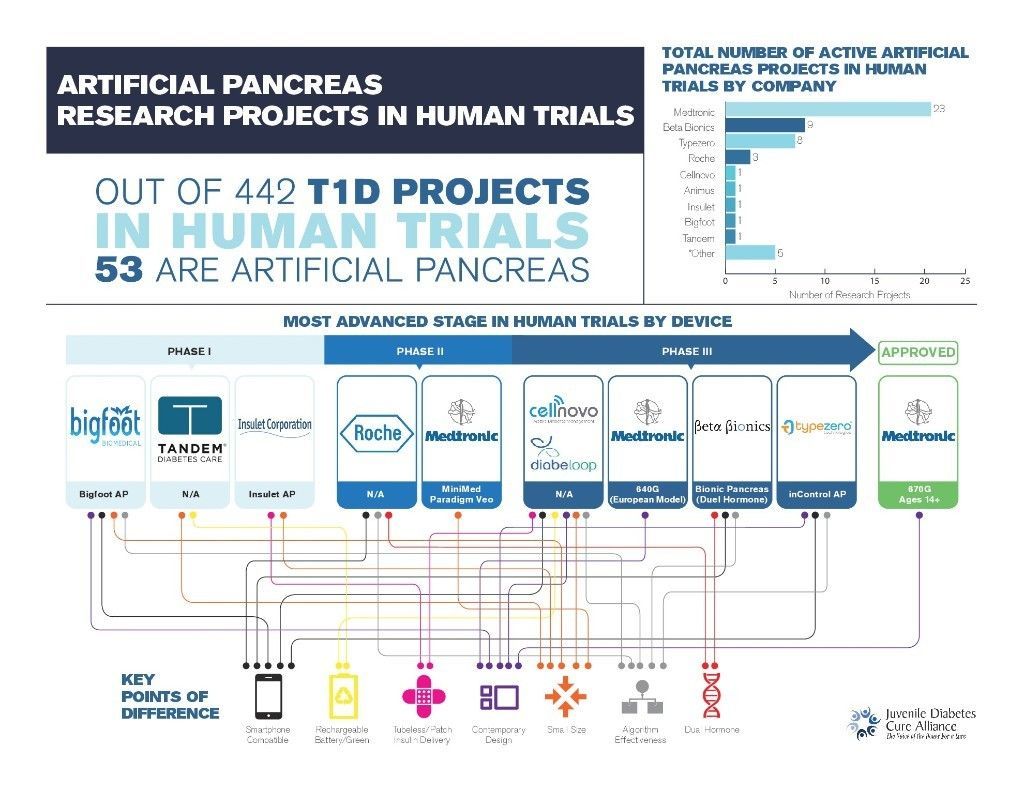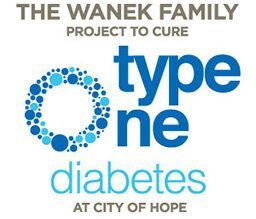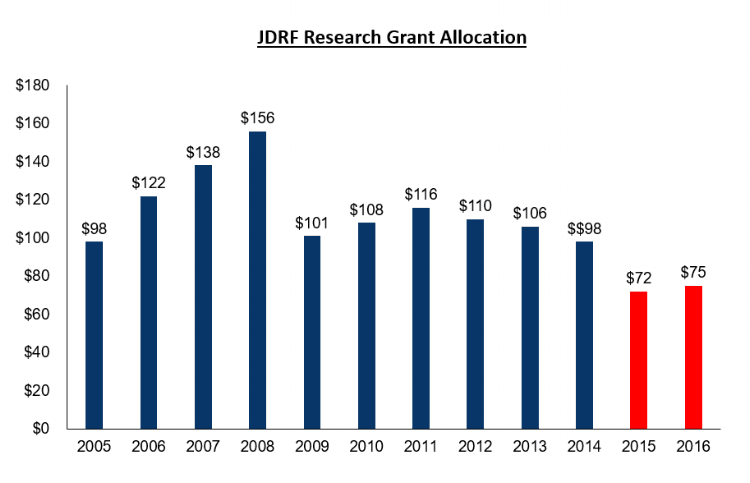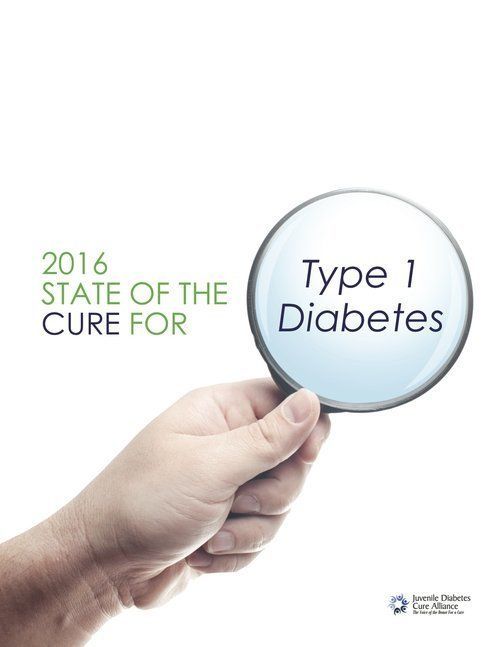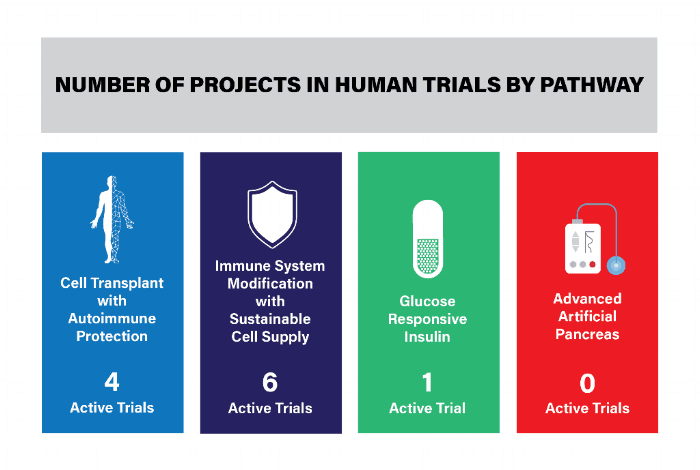This is the fifth in a series of reports on the top five largest T1D research centers in the U.S. It features a profile of the Diabetes Research Institute (DRI) at the University of Miami.
With the conclusion of 2017 just around the corner, many people will make their annual donations to charitable organizations. This report describes the 4S's of good giving donation approach. It is straightforward, easy to implement, and will help ensure that your generosity is used in the way you want it to be used.
This is the fourth in a series of reports on the top five largest T1D research centers in the U.S. It features a profile of Wake Forest School of Medicine (WFSM).
This report outlines the paradigm shift necessary for the T1D research and fundraising community to achieve a Practical Cure for type 1 diabetes in the next 15 years.
The JDCA recently completed a polling survey to identify the main reasons people within the T1D community participate in diabetes fundraising walks.
This is the fifth in a series of reports detailing individual research projects currently in human trials with the potential to deliver a Practical Cure.
This is the 6th annual review of advertising messages used by the ADA and JDRF at national fundraising events.
This infographic explains how JDRF, the largest and most influential diabetes fundraising organizations in the U.S., uses its funds.
This infographic explains how the ADA, one of the largest and most influential diabetes fundraising organizations in the U.S., uses its funds.
This report outlines JDCA's five recommendations for improving the performance of the Board of Directors at the ADA and JDRF.
This is the sixth annual review of executive compensation for the top diabetes non-profits. The review focuses on the ADA and JDRF, the largest diabetes fundraising organizations, but also includes data for Joslin and the Diabetes Research Institute Foundation (DRIF), two other notable diabetes funding organizations we periodically cover.
This is the third in a series of reports on the top five largest T1D research centers in the U.S. It features a profile of the Diabetes Center at the University of California, San Francisco (UCSF).
In a paper published in Stem Cells Translation Medicine, SymbioCellTech "functionally" cured T1D in mice.
This report is the fifth annual review of JDRF research grant allocations.
This report provides an update on the Stem Cell Educator project at Hackensack Medical Center and features an interview with the Principal Investigator Dr. Yong Zhao.
This report features a profile of the University of South Florida Diabetes Center, the largest recipient of federal T1D funding.
This report is a review of the American Diabetes Association's 77th Scientific Sessions, the largest diabetes research conference of the year.
This report defines the four Practical Cure research pathways.
This is the fifth annual review of type 1 diabetes human clinical trial research currently underway.
This is the fourth in a series of reports detailing individual research projects currently in human trials with the potential to deliver a Practical Cure.
In a paper published in Current Pharmaceutical Biotechnology, UT Health researchers cured T1D in mice by reprogramming cells to produce insulin.
A JDCA commentary on the process used by JDRF to decide what research to fund and what research not to fund. There is no task more important or mission central to JDRF than funding research.
This is the third in a series of reports detailing individual research projects currently in human trials with the potential to deliver a Practical Cure.
This report features a profile of the City of Hope (COH) Diabetes & Metabolism Research Institute, located in California.
This report provides an overview of the top 20 type 1 diabetes (T1D) research institutions with the largest allocated budgets.
This is the second in a series of reports detailing individual research projects currently in human trials with the potential to deliver a Practical Cure.
This is the fifth annual survey-based report on the giving priorities of T1D donors.
This is the third and final report in a series on JDRF financials. The main takeaway is that JDRF's cost of administering research grants has continued to increase.
This is the first in a series of reports detailing individual research projects currently in human trials that have the potential to deliver a Practical Cure.
This report analyzes the key sources of income for JDRF and the primary ways this money was used during 2016.
Last week, JDRF released a press release quietly announcing the creation of the JDRF T1D Fund, a for-profit investment fund.
The primary objective of this article is to provide an overview of Artificial Pancreas projects by stage in human trials.
A $50 million dollar donation to a T1D research center caused significant fanfare throughout the T1D community on Monday.
This report provides a quick overview of JDRF's 2016 research grant spending and is the first in a series of reports that will review different aspects of JDRF financial statements.
This is the fifth annual edition of this report. It summarizes progress made during 2016 toward a Practical Cure for type 1 diabetes.
This report reviews the 11 active Practical Cure research projects underway in FDA approved human clinical trials.

